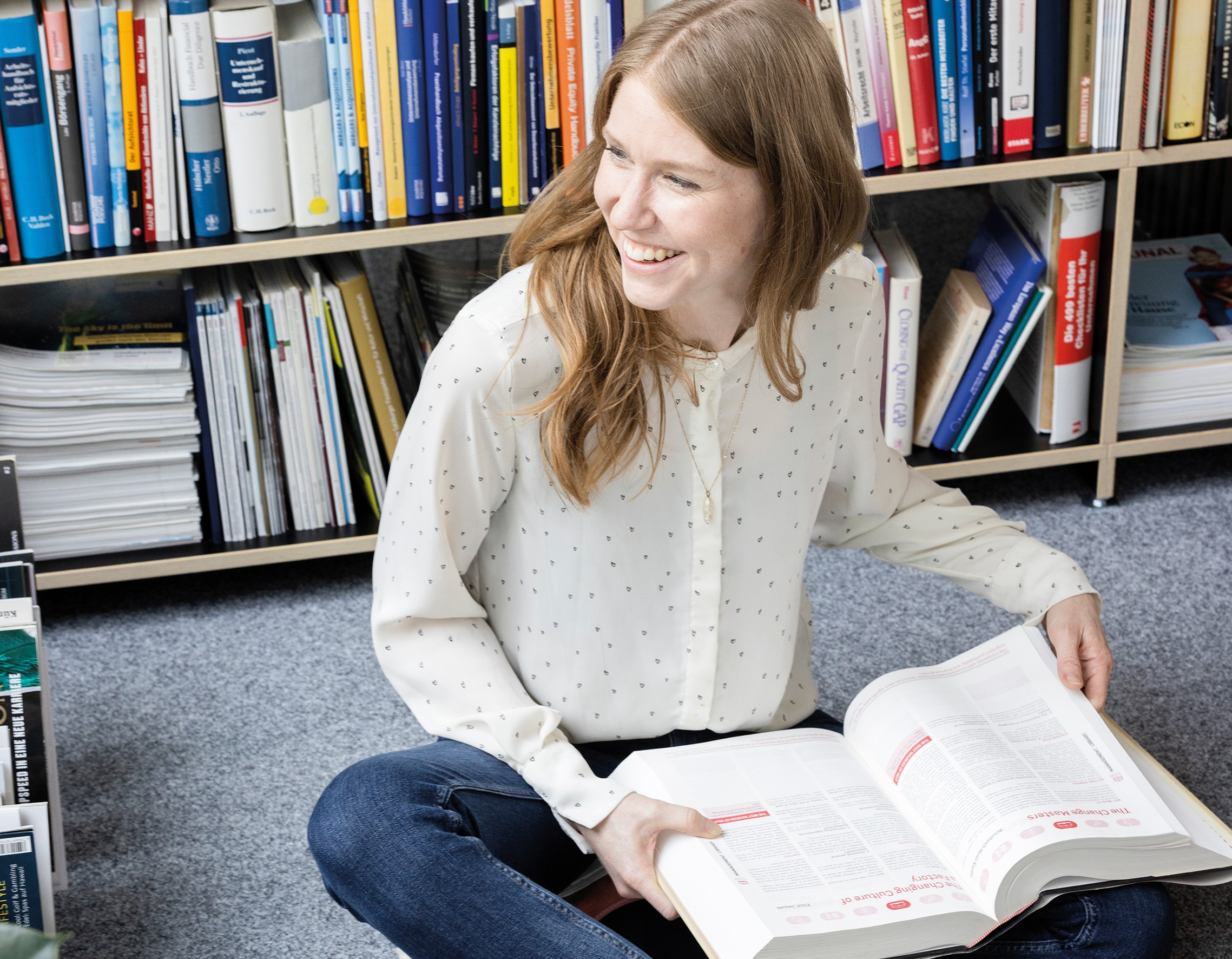The New Work Dictionary.
By Helena Pumberger, 07.02.2023

What’s the difference between co- and crowdworking? How does remote work function in actual fact? And what do you associate with the word scrum? The new world of work has produced a great number of neologisms, many of them unknown. We have slashed our way through the jungle of New Work terms and compiled the top ten in a New Work dictionary.
- Digital transformation: This is the ultimate synonym for New Work. It has the prime aim of automatising processes and workflows, and of reducing paper-based documents. To implement this transformation, the prime essentials are a clean file structure for organising digital document storage, and backup copies in the form of Cloud solutions. In the long term, digital documents should not in any way be a dead archive, but with filters, tags and search processes contribute to a vibrant, collaborative and team-oriented way of working.
- Activity Based Working: New Work offices offer employees and business partners differentiated and versatile work environments that create a supportive setting depending on the respective task = activity based working. This includes installing areas for co-working and creative zones for collaboration. Typical work environments in activity based working are working cafés, libraries, lounge areas and intermediate areas.
- Remote Work: This is frequently equated with work at home but is a quite individual form of mobile and location-independent work. Those who work remote can deal with tasks from any location. The sole prerequisite is a functioning Internet connection. Communication with the firm takes place via telephone, video conference and Cloud collaboration. Frequently, remote workers also require a secure connection to the company server via VPN.
- Crowdworking: Crowdworking is a phenomenon associated with the digital world of work. Company assignments are issued by means of online platforms to persons scattered across the world (the so called crowd). The system functions completely location-independent – the employees are resident internationally and work independently and digitally directly from their location.
- Hybrid Meeting: Modern technical equipment for conference and meeting rooms make it possible: analogue talks with virtual participants. While part of the group meet in situ “in the flesh”, other participants can be connected via video conference. This requires an equipment concept compliant with the respective communication requirement, also modern conferencing technology. The basis for a functioning meeting experience consists in providing collaboration tools such as Teams, Slack and Zoom, also sophisticated all-in-one hardware, which combines room microphone, loudspeakers and video camera in one device. Supported by up-to-date displays for visualisation, they ensure – even at hybrid meetings – optimal visual and audio quality for multiple physical and virtual participants.
- Artificial Intelligence (AI) in the office: The digitisation of the world of work is striding forwards at breathtaking speed. Systems with artificial intelligence are striking for their capability in autonomous solution-finding. In the age of big data, AI can already make decisions that presume analytical skills. But it is mainly implemented to do routine tasks or provide automatised answers to customer queries. AI thus helps to make processes quicker and simpler in routine, everyday tasks.
- Agile Working: Change management is struggling increasingly to master processes of change that are difficult to plan. The solution to these processes of change is called agile working. Whoever works in an agile way can adapt quickly, react spontaneously and intervene flexibly. The prerequisites are flat hierarchies, an all-encompassing freedom to make decisions, and the reduction of bureaucratic hurdles. An important concept in this context is design thinking. Here, complex problems are solved by means of creative processes. The process is based on the work of architects and designers. The work process is basically intuitive, but can be outlined in five phases. At the start a team gets together to define the issue at stake. Then the circumstances are observed by all participants. These observations are gathered together in the third phase. This leads directly to the gleaning of ideas and the subsequent development and implementation of solutions.
- Work-Life Blending: In contrast to the already familiar work-life balance, in which work and leisure are distinctly separated and balanced out with each other, work-life blending blurs the separating borders. Driven by the motor of digitisation, people can now work everywhere and at all times. Especially in knowledge work and creative activities, many important ideas and thoughts occur in tranquil moments, thus often in one’s leisure time. The workday is thus never completely over. On the other hand, there are no longer any strict working hours. Trust-based working hours usually take over here.
- Coworking: If New Work was a place, then it would probably be a coworking space. As the word suggests, it refers to collectively used office space. Originally, the trend towards coworking was conceived as a modern and cost-efficient contact point for freelancers and start-ups: people who do not work directly together but might use the reciprocal synergies of the collective and inspiring work space and simultaneously form a community that performs the important social tasks of cooperation among people
- Scrum: from the sport of rugby. A scrum as we all know is a dense mob of players all scrambling for the rugby ball; in project management it symbolises a crowd in the sense of team members closely working together in permanent interaction. And more aspects are associated with rugby apart from the word itself; scrum also makes use of the tried and tested tactics of the sport, which demand excellent teamwork and have to be carefully studied. Models and pioneers in this field are IT enterprises. Development processes are too complex to deal with strictly according to plan in sequential phases. Scrum offers the necessary flexibility in order to react to the unpredictable in a quick and agile way.




